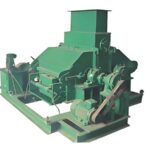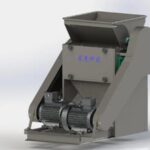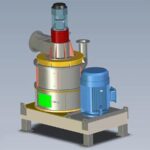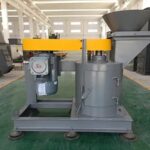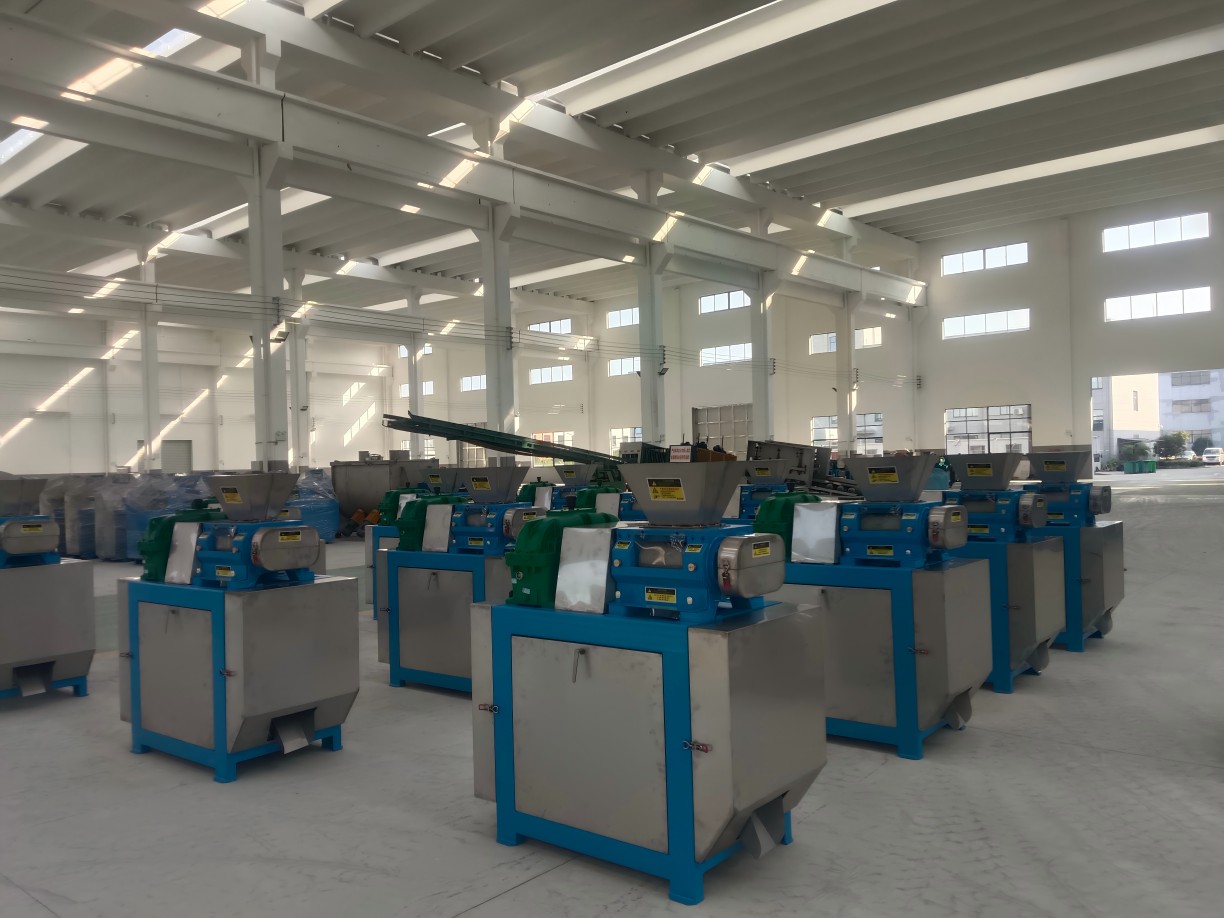Lump Breaker
Single Shaft Lump Breaker
The single shaft lump breaker is commonly used in the fertilizer industry to handle materials such as ammonium chloride, potassium fertilizer, and ammonium carbonate. Over time, these materials tend to clump together when stored, forming large lumps. Before feeding the raw materials into the production line, this lump breaker performs a rough break, reducing large clumps, some as big as several centimeters, down to sizes below 3-4 cm. Its simple structure, compact size, and low energy consumption make it an efficient and practical solution for material handling.
Specifications
| 型 | 功率 (kW) | 生产能力 (t/h) | 进料粒度 (mm) | 最终尺寸 (mm) | 转子长度 (mm) |
| PD600 系列 | 5.5 | 5-8 | ≤100 | ≤50 | 600 |
| PD700 系列 | 7.5 | 10-15 | ≤150 | ≤50 | |
| PD950 系列 | 11 | 15-20 | ≤50 |
Double Shaft Lump Breaker
Lump breakers can process large compacted material by reducing it into smaller, manageable pieces using dual rotors equipped with sharp teeth blades. The operation relies on the combined actions of cutting, squeezing, and tearing, where the material is broken down as the two counter-rotating rotors interact with fixed blades positioned within the housing. Initially, the raw materials, which could measure several centimeters in size, are reduced to fragments under 5 cm. This type of crusher is particularly beneficial for industries dealing with compacted substances like ammonium chloride, potassium chloride, ammonium sulfate, and compound fertilizers. Its robust design simplifies operation, ensuring reliable performance even with dense or tough materials. Furthermore, the simplicity of the structure allows for easier maintenance, offering high efficiency and lower downtime in the production process.
Specifications
- The tooth knives are made of high-strength, wear-resistant alloy steel, ensuring a long service life.
- Operates with high torque and low speed, which reduces dust production during material processing.
SPECIFICATIONS
FAQ
How to choose the right fertilizer production equipment for my plant?
Choosing the right equipment for your fertilizer production project starts with understanding your production needs. Here are a few key questions that help narrow down the best options:
- What type of raw materials are you working with?
- Do you aim to produce powdered or granular fertilizer? What specific characteristics should the final product have?
- What is the desired output capacity for your production line?
- What are the local environmental conditions, such as temperature and material moisture levels?
- What heat source will your drying equipment rely on?
Once we have this information, we can recommend the most suitable fertilizer processing equipment and production line for your needs.
Why does the granular fertilizer produced by my production line tend to clump?
Clumping is a common issue in fertilizer production, usually caused by moisture, temperature, and pressure. If the fertilizer you are planning on producing has a high moisture content, it could lead to clumping, which might mean your drying equipment isn’t performing optimally. Similarly, high temperatures can make the granules more prone to sticking together, which is why cooling equipment is often used after the drying process. Lastly, high pressure in the fertilizer production line can increase the surface area of the granules, making them more susceptible to chemical reactions that cause clumping.
Related Products
Contact us now
To Learn About Our Fertilizer Production Lines
Mobil/Whatsapp
086-17715506502
karen@yrcexport.cn

